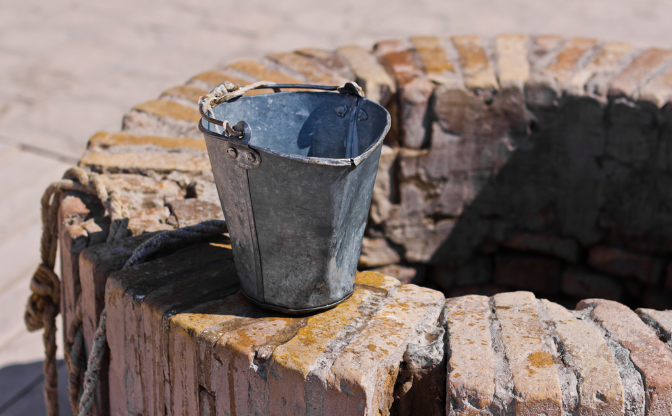Water wells are an invaluable resource in many homes, providing a reliable source of fresh, clean water. However, like all natural resources, they are not always consistent. There can be times when your well might run dry, potentially disrupting your water supply. While this can be a cause for concern, there are various solutions available that can help you manage and rectify this issue.

The first step to addressing a dry well is understanding why it’s happening. Many factors can contribute to a well running dry, such as drought conditions, overuse, or issues with the well’s structure itself. But don’t panic. There are practical solutions you can implement to not only restore your water supply but also to prevent such issues from occurring in the future. The following are nine solutions that can help you navigate a dry well situation effectively.
If your water well runs dry or experiences a significant decrease in water production, it can be a concerning situation. Several factors can cause a well to run dry, such as drought, over-pumping, declining groundwater levels, or issues with the well itself. Here are some possible solutions to consider if your water well runs dry:
- Check the Water Level: First, determine if the well has truly run dry or if the water level has dropped significantly. Sometimes, the water level can lower due to external factors, and the well may recover once conditions change. Monitoring the water level periodically can help you understand the well’s behavior.
- Reduce Water Usage: If your well is experiencing a temporary decrease in water production, consider conserving water usage until the water level rebounds. Minimizing non-essential water use can help give the well time to recover.
- Conduct a Well Inspection: If the well has stopped producing water, it’s essential to have a professional well contractor conduct a thorough well inspection. They can identify potential issues such as well pump problems, well blockages, or damage to the well casing, and provide the necessary repairs or maintenance.
- Well Deepening or Rehabilitation: Depending on the geological conditions and well construction, it may be possible to deepen the well to reach a more abundant water source. In some cases, well rehabilitation techniques, such as high-pressure jetting or chemical treatments, can help restore water flow.
- Water Well Re-drilling: In extreme cases where the well’s current location is no longer viable, re-drilling the well in a more favorable area might be necessary. A professional well contractor can help determine the best location for a new well.
- Consider Water Hauling or Temporary Solutions: In situations where well repair or re-drilling takes time, you may need to arrange for water hauling services or use temporary water sources until the well is fully functional.
- Implement Water Conservation Measures: Even if the well is restored, it’s essential to practice water conservation to prevent future issues. Implementing water-saving fixtures, fixing leaks, and using water wisely can help preserve your well’s water supply.
- Monitor Groundwater Levels: Stay informed about groundwater levels in your area. Joining local groundwater monitoring programs or using data from local agencies can help you anticipate changes in water availability.
- Hydrofracking: A Solution for Dry Wells: In situations where traditional well rehabilitation techniques have not yielded satisfactory results, hydrofracking, also known as hydraulic fracturing, can be considered as an alternative method to restore water flow to a dry well. Hydrofracking is a well stimulation technique that involves injecting high-pressure water into the well to create fractures in the surrounding rock formations. These fractures allow water to flow more freely into the well, enhancing its water-producing capabilities.
Remember, each situation is unique, and the appropriate solution depends on the specific circumstances of your well and water supply. Seeking the expertise of a qualified well contractor is essential to assess the situation accurately and implement the most effective solutions to address the issue of a dry well. Regular well maintenance and monitoring can help prevent future problems and ensure a reliable water supply from your well.


